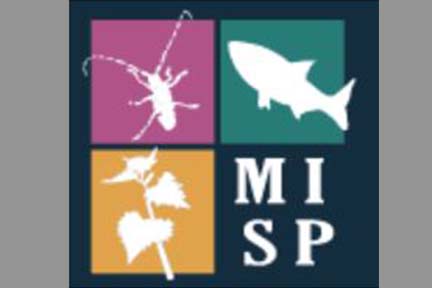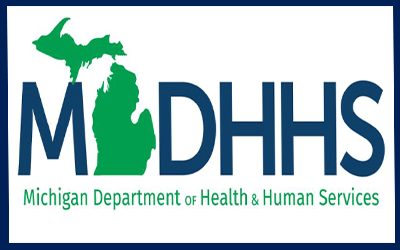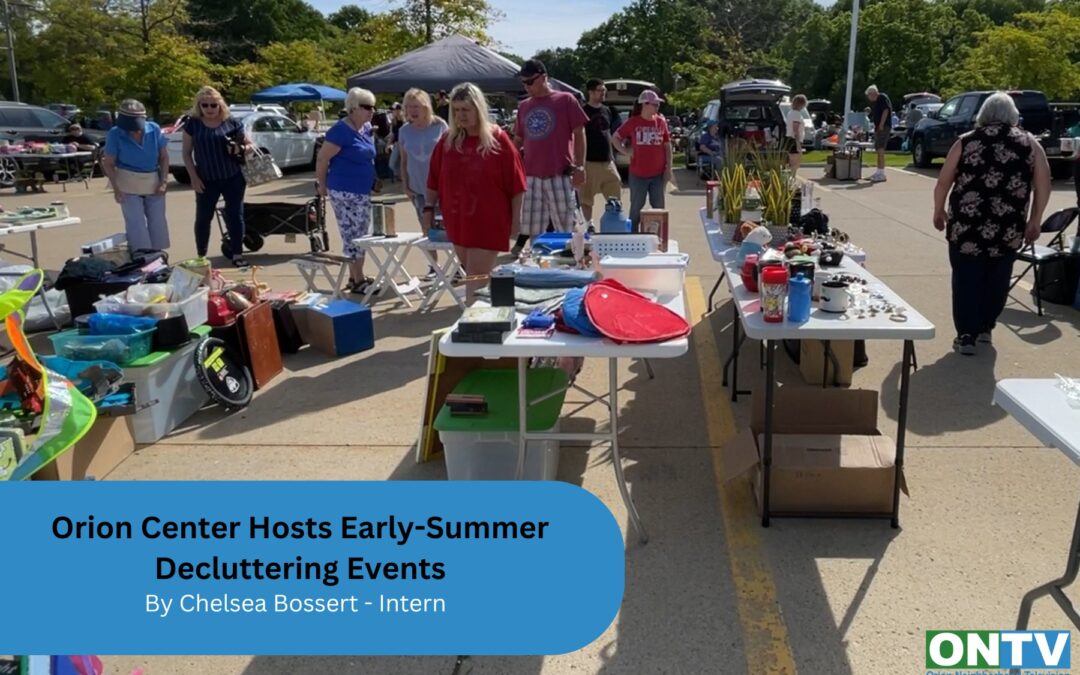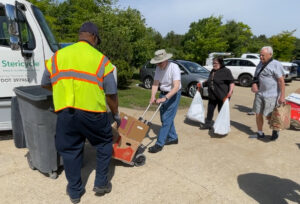
News Release: Early detection of aquatic invasive species
|
|
|||||||
 |
|||||||
News Release |
|||||||
|

|
|
|||||||
 |
|||||||
News Release |
|||||||
|

Press Release FOR IMMEDIATE RELEASE: June 4, 2024 CONTACT: Lynn Sutfin, 517-241-2112, [email protected] MDHHS approves eight PIHPs to expand substance
MDHHS, participating PIHPs and providers will collaborate to deliver an evidence-based treatment that provides motivational incentives, such as gift cards, to people living with an SUD who achieve their treatment goals. Medicaid beneficiaries with a diagnosis of stimulant use disorder, opioid use disorder, or both, will be eligible to participate in the pilot.
“This marks a significant milestone in our goal to make available an effective and evidence-based treatment option for beneficiaries living with substance use disorders,” said Elizabeth Hertel, MDHHS director. “We are excited to work with our PIHP partners who will play a key role in the pilot, including establishing and overseeing a network of providers who will administer this program.”
By establishing this program as a covered benefit on a pilot basis for Medicaid and Healthy Michigan Plan enrollees, MDHHS believes it can improve outcomes and support individuals in making behavior changes that drive recovery. The Recovery Incentives Pilot is one of several projects addressing SUD needs through opioid settlement dollars.
Michigan is slated to receive nearly $1.6 billion from national opioid settlements by 2040, with half being distributed to the State of Michigan Opioid Healing and Recovery Fund and the other half being distributed directly to county, city and township governments.
“By providing immediate rewards to individuals who meet their treatment goals, this pilot helps tip decision-making toward abstinence,” said Dr. Natasha Bagdasarian, chief medical executive and Michigan Opioids Task Force co-chair. “These incentives include gift cards to purchase certain items, such as food and gas, and will increase each week a participant does not use stimulants or opioids.”
MDHHS is offering the pilot for two years beginning Oct. 1. PIHPs will establish and oversee a network of providers to deliver the Recovery Incentives Pilot within their region and be responsible for administration and oversight activities including reporting, monitoring and quality improvement. Participating PIHPs were selected based on responses to a non-competitive request for applications.
The list of PIHPs participating in the Recovery Incentives Pilot are as follows:
“The Detroit Wayne Integrated Health Network is thrilled to participate in the Recovery Incentives Pilot to provide this treatment option across our provider network to meet the needs of Medicaid beneficiaries,” said Eric Doeh, president and CEO of DWIHN. “Expanding availability and use of recovery incentives aligns with DWIHN’s vision and long history of delivering evidence-based substance use disorder services that make a difference in the lives of the people we serve. We look forward to implementing the pilot and continuing to serve the people of Michigan.”
“Southwest Michigan Behavioral Health is proud to partner with MDHHS to expand access to effective treatment options for people living with substance use disorders,” said Bradley Casemore, CEO, SWMBH. “We look forward to implementing the pilot and improving access to treatment backed by decades of research to support individuals in southwest Michigan communities in their recovery.”
Visit the RI Pilot website for more information. For questions regarding the pilot, contact MDHHS-RecoveryIncentives@ |

ORION TOWNSHIP, Mich. – On Saturday, June 1, 2024, the Orion Center hosted an opportunity for residents to do some late-spring cleaning, sell their old stuff, and even get some new goodies to take home. Even though summer is not yet in full swing, Orion area residents gathered in the parking lot and in the inside of the Orion Center to partake in some free, fun activities for the first Saturday in June.

Photo by Joe Johnson
A community garage sale, a puzzle swap, a toy and comic expo, and a visit by the waste disposal company “Shred-It” prompted residents and non-residents to spend some time with the community and to relieve the burden of clutter.
Over two dozen vendors gathered in the parking lot of the Orion Center to sell their unwanted items that other people would possibly take a liking too. Everything from winter sweaters and summer clothing, to books, silverware, old appliances and even plants were sold at the community garage sale.
ONTV’s Joe Johnson spoke to Jennifer Vezina, a recreation programmer at Orion Township Parks and Recreation, about the event last Saturday.
“We have about 25 vendors set up out here selling all of their wonderful things that they no longer need, that somebody else desperately needs,” Vezina said.

Photo by Joe Johnson
The Toy and Comic Expo, along with the Puzzle Swap, took place inside the Orion Center and was with tables of toys, comics, collectibles, memorabilia and other items people in the collecting world might want – kids too, of course.
“Inside we have the Toy and Comic Expo, those guys have your collectible items, matchbox cars, comic books, things of that nature. We also decided to double down on our events today, I also have the puzzle swap and I have “Shred-It” coming from eleven to one,” Vezina said.
At 11 a.m., residents lined up across the entire length of the parking lot in order to dump their unwanted paper items into dumpsters to be taken away and disposed of properly and even recycled.
Residents and others seem to have enjoyed the event and were happy to get rid of some unwanted items as well as to spend some time outdoors on a nice Saturday morning and afternoon, but how long will it be before residents can do this again?
“We will repeat this event in August, with the Garage Sale and the Toy and Comic and that… but our next outdoor event coming up is Summer Sizzle, on Thursday, June 20, from 6 to 8 p.m., and it will be here at the Orion Center out back – and that is a lot of fun for families and everything is free,” Vezina said.

Photo by Joe Johnson
For more information on events like these, you can visit orionparks.com.

Press Release FOR IMMEDIATE RELEASE: June 4, 2024 CONTACT: Lynn Sutfin, 517-241-2112, [email protected] MDHHS provides $5 million to 12 universities to increase LANSING, Mich. – The Michigan Department of Health and Human Services (MDHHS) has provided $5 million to 12 Michigan universities to provide $30,000 stipends to students seeking to obtain a master’s degree in social work and who commit to working in behavioral health in the state upon graduation. The Bachelor of Social Work (BSW) to Master of Social Work (MSW) Program seeks to increase the number of master’s degree level social workers in the behavioral health workforce throughout the state. The program provides one-time, $30,000 stipends to bachelor’s level social workers who agree to enter a full-time advanced standing MSW program and provide at least two years of full-time employment in public sector behavioral health in Michigan. “This program is another investment by the state to increase access to behavioral health care for Michigan families,” said Elizabeth Hertel, MDHHS director. “We are committed to helping families access behavioral health care services when and where they need them. We anticipate up to 150 students will be able to obtain their master’s degree in social work through this program.” Award amounts were calculated based on average number of students in the advanced standing MSW program, average student loan debt and demographic diversity. The following Michigan universities received funding:
Participating universities will now work to contract eligible students into the program to begin working toward their MSW degree. Students are required to enroll in a full-time advanced standing MSW program. The length of the program can vary from university to university; however, it is generally three semesters, or one year. For additional information, email Jilliann Betzer at [email protected]. |

The Michigan Department of Natural Resources (MDNR) is hosting a Free ORV and Summer Free Fishing Weekend June 8-9 and there are plenty of opportunities to join in these fun activities at Oakland County Parks (OCP).
Oakland County Parks offers close-to-home fishing at seven parks: Addison Oaks near Rochester, Groveland Oaks in Holly, Highland Oaks in Highland, Independence Oaks in Clarkston, Orion Oaks in Orion, Pontiac Oaks in Pontiac and Rose Oaks in Holly. Participants will need a daily park pass or a vehicle permit for entry at these parks except for Pontiac Oaks. View a Map of Fishing Opportunities in Oakland County Parks.
Holly Oaks ORV Park is also participating in the Free ORV Weekend. During these two days, Michigan residents and visitors can legally ride DNR-designated routes and trails without purchasing an ORV license or trail permit. The entrance fee for Holly Oaks ORV Park has been waived by the Oakland County Parks and Recreation Commission.
Although fees are waived, all ORV rules and laws still apply. This includes that all vehicles entering the park must have a 10’ orange flag securely mounted and all ORV riders and drivers must also sign a waiver form before entry. No vehicles or rented vehicles are provided/available; guests must bring/provide their own off-road vehicle.
Holly Oaks offers nearly 200 acres of off-riding fun with old mining roads and extreme terrain that ranges from mud flats to 40’ vertical cliffs, including 62 acres utilized as a scramble area. The park is situated in Groveland and Holly townships near Groveland Oaks County Park and Campground on Dixie Highway. It is operated by Oakland County Parks and Recreation, in partnership with the Michigan Department of Natural Resources Parks and Recreation Division. It is open to all types of ORVs, including full-size vehicles, side-by-sides, all-terrain vehicles or ATVs and motorcycles.
Holly Oaks ORV Park is open 10 a.m.-8 p.m. June 8-9.